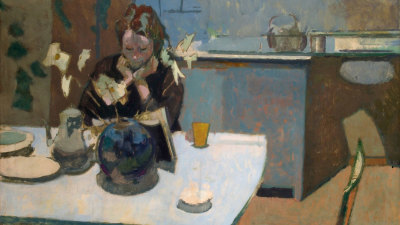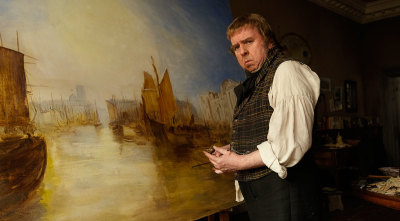This week: five top art shows to see
This week: five top art shows to see
23 – 29 September
By Alice Primrose
Published 23 September 2016
From a project tracing Lithuania’s toppled political statues, to a show of flesh in its many forms, here’s our pick the week’s top art shows.
-
Protest
Victoria Miro, London, until 5 November
Protest gathers together artists that probe the socio-political issues of their time, from Alice Neel’s 1936 painting of a Communist anti-Nazi parade, to Jules de Balincourt’s 2015 painting of an ambiguous street throng – the latter evoking the hypervisibility of contemporary celebrities, and the marked invisibility of those missing or disappeared in Chile and Mexico. The show also includes delicate pencil drawings by Kara Walker, from her series ‘Tell Me Your Thoughts on Police Brutality Miss “Spank Me Harder”’, which entwines the symbols and legacies of the American Civil War amongst those of recent murders of unarmed black men. They are a contrast to her large-scale panoramic friezes, and a timely reminder of the long-reaching and often untold history behind many of today’s injustices and related protest movements.
-
Doug Aitken , Free , 2016 .
High density foam, wood and mirror. 83.8 x 304.8 cm. Courtesy 303 Gallery, New York, Galerie Eva Presenhuber, Zurich; Victoria Miro, London and Regen Projects, Los Angeles. © Doug Aitken.
-
Flesh
York Art Gallery, York, until 19 March 2017
Still radiant from last year’s dramatic renovation, York Art Gallery is on this year’s Art Fund Museum of the Year shortlist. The gallery’s latest exhibition explores depictions of skin in “a series of visual encounters which surprise and challenge”, in the words of its curator, Laura Turner. The show spans 600 years, from the 14th century painting Dead Christ with Virgin and St John, to Jen Davis’ ongoing photographic self-portraiture, and Sarah Lucas’ evocative sculpture. Perhaps most poignantly, the exhibition blurs the line between human and animal flesh, including Sam Taylor-Johnson’s time-lapse video, A Little Death, in which a hare’s body is slowly consumed by maggots and flies.
-

Jen Davis , Untitled No. 26 , 2007 .
Courtesy of Lee Marks Fine Art IN, and ClampArt NY.
-
Indre Šerpytyte: Pedestal
Parafin, London, until 12 November
“Through my images I attempt to reconstruct my inherited memory in the attempt to make the past more tangible. By rebuilding the inherited history I try to reclaim it,” says the London-based Lithuanian artist, Indre Šerpytyte. In this most recent series of works, she uses collages of photographs to trace the transformations of Lithuania’s Soviet-era statues: from grand public spaces, to a kitsch theme park saturated with nostalgia. What happened between these two times and places – including the mysterious death of the artist’s own civil servant father – is buried in the glaring fault lines between the photographs. The exhibition also features a new audio work, exploring the triumphant toppling of political statues, alongside new sculptural works, which use the allure of polished granite to delve into the connotations of the pedestal itself.
-

Indre Šerpytyte , Pedestal, Girls , 2016 .
Ink on vinyl and dibond. 139 x 239 cm. © Indre Šerpytye 2016. Courtesy Parafin, London.
-
Towards Night: Sixty Artists Explore the Nocturnal
Towner Art Gallery, Eastbourne, 24 September - 22 January 2017
The world of 19th-century Romantic painting seems a far cry from an after-dark stroll today, but this show, curated by artist Tom Hammick, begins a conversation that stretches over two centuries of sundown. 60 works amass to explore the tendrils of ideas and influences that have wound their way around paintings of nightfall from Edvard Munch and JMW Turner, to LS Lowry’s drunken pub scenes, to Louise Bourgeois’s sleepless spirals. Recurring themes creep out of the shadows, from wonderment and love, to revelry, anxiety and dystopia. Recent works elevate the activities of the contemporary nighttime, from Betsy Dadd’s indistinct portraits of women drinking, to Phoebe Unwin’s murky cinema, to Michael Craig-Martin RA’s ashtray, and the cold glow of the TV from outside Danny Markey’s windows.
-

Tom Hammick , Waiting for Time , 2016 .
Edition variable reduction woodcut. Care of Hammick Editions.
-
Sara Barker
IKON, Birmingham, until 27 November
Barker says her ideas originate in the writing of Gertrude Stein, Doris Lessing and Virginia Woolf, where “space is a metaphor for creative freedom”, and was often restricted or denied. Her paintings are maybe not really paintings at all: they have protrusions of steel and aluminum rods, and boundaries demarcated or extended by planes of glass. Many do not need a nail in the wall to display themselves: they use their thin metal limbs to stand freely in the middle of the room, or on the floor, or to take a step forward from the wall, creating and inhabiting unexpected spaces, and proclaiming their own bold presence.
-

Sara Barker , metamorphosis of friends disappeared subtle structures (detail) , 2016 .
Aluminium sheet, steel rod & bar, perspex, brass rod, automotive paint. Courtesy the artist; Mary Mary, Glasgow; carlier | gebauer, Berlin; The Approach, London. Photo: Max Slaven.
-
Alice Primrose is an editorial intern at RA Magazine.








